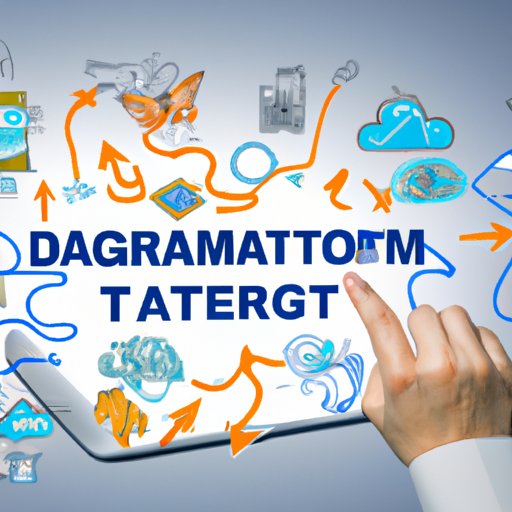Introduction
When we think of a gateway, we often associate it with something that provides access to another place or space. But in the world of technology, the term ‘gateway’ takes on a different meaning. A gateway acts as an intermediary device between networks, enabling seamless integration, data management and connectivity between devices or networks that may use different protocols and interfaces. In this article, we’ll explore what a gateway is and its role in facilitating digital transformation in today’s interconnected world.
A Beginner’s Guide: Understanding What a Gateway Is and How It Can Benefit You?
A gateway can be described as the translator that sits between two different systems. It serves as the connection point between devices that may use different communication protocols. Examples of gateways in everyday life include a Wi-Fi router which operates as the gateway between the internet and the network of devices in our homes.
The benefits of gateways are numerous. They enhance connectivity between disparate devices. They serve to manage data more effectively, making it easier for devices to communicate and exchange information. For instance, a medical device can use a gateway to send data over the internet to a data center where it can be stored, processed and analyzed.
Exploring the Importance of Gateways in Our Interconnected World
With the increasing reliance on digital connectivity, the need for gateways to facilitate that connectivity has grown more important. Gateways help overcome the challenges of connecting devices that use different communications protocols and languages. They translate data so that it can be understood and used by different technology solutions. Additionally, they offer security by acting as a firewall against threats coming from the internet.
The Various Types of Gateways – A Comprehensive Overview
There are various types of gateways available such as protocol, network, IoT, cloud and more. Protocol gateways are the most common types of gateways that act as language translators between two systems that use different communication protocols. A network gateway, on the other hand, handles communication between a private network and a public one, such as the internet.
IoT gateways, however, have become increasingly essential due to the increasing adoption of connected devices. An IoT gateway is a device that connects IoT devices to the internet, enabling data sharing between the devices and the cloud. Cloud gateways facilitate the communication between on-premises resources and cloud services. Different types of gateways have different use cases depending on the application and environment. Choosing the right type of gateway can optimize system performance and reliability.
Why Businesses Are Investing in Gateways and How It Helps Streamline Their Operations
Businesses are now looking at ways to streamline processes and cut operational costs. One of the ways they can achieve this is through gateway technology. Gateways play a vital role in data analysis, automation, and ensuring compliance and efficiency in operations by enabling devices to communicate and share data automatically. For instance, in a smart factory, an IoT gateway enables the connection of systems and machines, automating the production process while providing real-time visibility and analytics for monitoring and maintenance.
Are Gateways the Missing Piece in Your IoT Solution? Find Out More Here
IoT gateways enable the connection of IoT devices to the internet, providing remote access capability to monitor operational performance and enhance the data analysis of interconnected devices. IoT gateways help improve the overall functionality and service offering by enabling the devices to communicate with each other and share data with connected systems. It is crucial to assess whether an IoT gateway is necessary for your application requirements.
Gateways versus Routers: Understanding the Fundamental Differences
Gateways and routers are two terms that are often used interchangeably, and sometimes this can lead to confusion. However, it is worth noting that routers work by routing data packets to different networks, using different communication protocols, while gateways are devices that translate or convert data between different networks or protocols, enabling communication where there might have been no possibility before.
The Evolution of Gateways: From Simple Devices to the Backbone of Connected Systems
Gateways have come a long way since their early days. They were initially used for simple tasks, such as translating data and connecting devices. Now gateways have become the backbone of connected systems, enabling communication, and data transfer between devices from various manufacturers seamlessly. Advances in technology have enabled gateways to become increasingly sophisticated, with enhanced connectivity and improved security features. It’s exciting to think about where gateways will take us in the future of IoT networks.
Conclusion
Gateways are a critical component of modern technological systems, allowing communication and data transfer between devices that use different communication protocols. They facilitate digital transformation and enable devices to communicate with each other while enhancing connectivity, improving data management and automating business processes. It’s worth exploring different gateway types to find which suits your needs and enable you to create more efficient, secure and connected systems.
